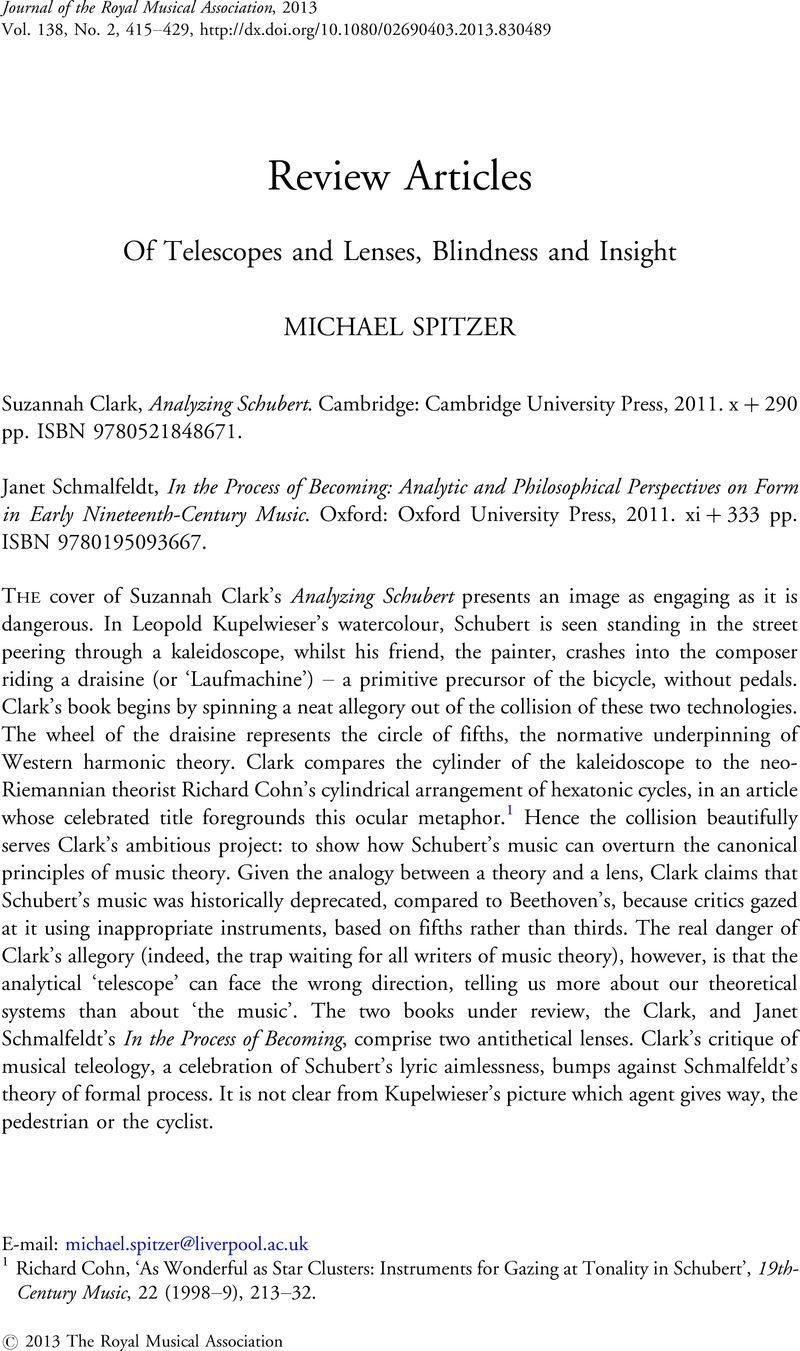Published online by Cambridge University Press: 01 January 2020

1 Richard Cohn, ‘As Wonderful as Star Clusters: Instruments for Gazing at Tonality in Schubert’, 19th-Century Music, 22 (1998–9), 213–32.
2 Scott Burnham, Beethoven Hero (Princeton, NJ, 1995).
3 For the notion of ‘promissory note’, a salient or troublesome pitch introduced early on in a piece, which gradually looms in significance, see Edward T. Cone, ‘Schubert's Promissory Note: An Exercise in Musical Hermeneutics’, Schubert: Critical and Analytical Studies, ed. Walter Frisch (Lincoln, NE, and London, 1986), 13–30.
4 David Kopp, Chromatic Transformations in Nineteenth-Century Music (Cambridge, 2002).
5 William Caplin, Classical Form: A Theory of Formal Functions for the Instrumental Music of Haydn, Mozart, and Beethoven (New York, 1998); James Hepokoski and Warren Darcy, Elements of Sonata Theory: Norms, Types, and Deformations in the Late-Eighteenth-Century Sonata (New York, 2006).
6 Janet Schmalfeldt, Berg's ‘Wozzeck': Harmonic Language and Dramatic Design (New Haven, CT, 1983).
7 Janet Schmalfeldt, ‘Form as the Process of Becoming: The Beethoven–Hegelian Tradition and the “Tempest” Sonata’, Beethoven Forum, 4 (1995), 37–71.
8 ‘Spitzer emerges as Dahlhaus's clearest successor within the pantheon of Beethoven-Hegelians’ (Schmalfeldt, In the Process of Becoming, 279).
9 ‘Loose organization is characterized by harmonic-tonal instability, evasion or omission of cadence, diversity of melodic-motivic material, inefficiency or ambiguity of functional expression, and asymmetrical phrase groupings (arising through extensions, expansions, compressions, and interpolations)’ (Caplin, Classical Form, 17).
10 See David Lewin, ‘Music Theory, Phenomenology, and Modes of Perception’, Music Perception, 3 (1986), 327–92. Lewin's essay was part of his even larger study of Morgengruss, which forms the basis of a forthcoming book: David Lewin's Morgengruss: Text, Context, and Commentary, ed. David Schwartz and Richard Cohn.
11 Marianne Kielian-Gilbert, ‘Interpreting Schenkerian Prolongation’, Music Analysis, 22 (2003), 54–104 (p. 83).
12 Steven Laitz, The Complete Musician: An Integrated Approach to Tonal Theory, Analysis, and Listening (2nd edn, New York, 2008), 477.